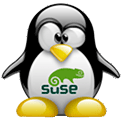NAME
rt_sigqueueinfo - queue a signal and data to a process
SYNOPSIS
long sys_rt_sigqueueinfo(int pid, int sig, siginfo_t * uinfo);
DESCRIPTION
sys_rt_sigqueueinfo() sends the signal specified in sig to the process whose PID is given in pid. The null signal (0) can be used to check if a process with a given PID exists.
The uinfo argument is used to specify an accompanying item of data (either an integer or a pointer value) in the sigval part of the siginfo_t structure to be sent with the signal.
If the receiving process has installed a handler for this signal using the SA_SIGINFO flag to sigaction(2), then it can obtain this data via the si_value field of the siginfo_t structure passed as the second argument to the handler. Furthermore, the si_code field of that structure will be set to SI_QUEUE.
RETURN VALUE
On success, sys_rt_sigqueueinfo() returns 0, indicating that the signal was successfully queued to the receiving proces. Otherwise, one of the following errors is returned.
ERRORS
| -EAGAIN | |
| The limit of signals which may be queued has been reached. | |
| -EINVAL | |
| sig was invalid. | |
| -ESRCH | No process has a PID matching pid. |
| -EPERM | The process does not have permission to send the signal to the receiving process. |
| -EFAULT | |
| memory error. | |
NOTES
If this function results in the sending of a signal to the process that invoked it, and that signal was not blocked by the calling thread, and no other threads were willing to handle this signal (either by having it unblocked, or by waiting for it using sigwait(3)), then at least some signal must be delivered to this thread before this function returns.
CONFORMING TO
POSIX 1003.1-2001
SEE ALSO
kill(2), sigaction(2), signal(2), sigwait(3), signal(7), sigqueue(2)
